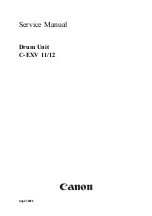
1
chapter 12
MIXING AND EFFECTS USAGE
Overview
The aim of this chapter is to help you approach mixing with BFD2, covering everything from use of mic channels to the built-in FX
suite.
Mixing advice
These sections give you pointers on mixing – from using BFD2’s built-in control over mic channels, bleed and panning to routing
functions, external processing and understanding how to mix each part of the kit.
Please take the advice for what it is: a useful starting point if you’re inexperienced with mixing drums. It’s not intended as gospel
or a set of rules. There are no rules – if you have your own ideas about your sound, we encourage you to experiment and be
creative.
12:1 Mixing basics
How to approach mic channels, panning, gain, EQ and compression.
12:6 Mixing each part of the kit
Some helpful pointers on using EQ and other processing on various parts of the kit.
12:7 Routing scenarios
A guide to using BFD2’s routing functions for three common scenarios: creating a sub-mix, achieving mic channel separation over
separate outputs and creating a send to an external reverb.
12:8 External processing
More creative advice on using external processing to take your drum sounds even further.
BFD2 FX guide
The BFD2 FX all contain a number of common controls, located at the top of each effect’s interface. See section 3:7 for more
details about these controls, as well as for information on launching and managing effects in your mixes.
The guide in this chapter contains suggested uses for common controls where particularly applicable, such as when using the
Mix control for quick parallel compression effects.
Note that it is beyond the scope of this guide to provide a full explanation of each effect and how it works – some familiarity with
these types of processors is assumed.
12:2 EQ and filtering
A guide to BFD2’s EQ, Filter and FilterMod FX.
12:3 Dynamics processing
A guide to using BFD2’s dynamics processors: CompChan, CompBus and NoiseGate.
12:4 Distortion
A guide to the Drive and BitCrusher FX.
12:5 Other effects
A guide to the rest of the processors in BFD2: Gain, Delay, Flanger, Chorus, RingMod, FreqShift, TinCanVerb
D.CAM FX
FX labelled with the D.CAM logo are painstaking models of real-world analog circuits and components, including their non-lineari-
ties. These advanced modelling techniques bring you as close as possible to manipulating your sounds with real analog hard-
ware.
The fully D.CAM-modelled FX are the Comp Chan, Comp Bus, Filter Mod and Drive processors.
The filters used in the EQ are also D.CAM modelled, as are filtering and drive elements of most of the other FX.














































